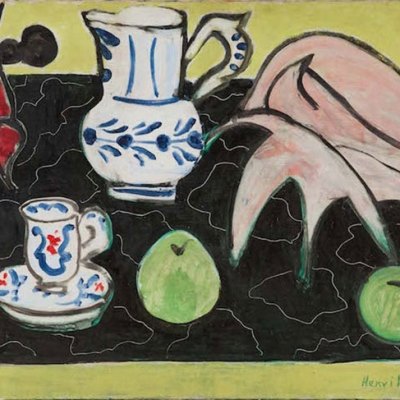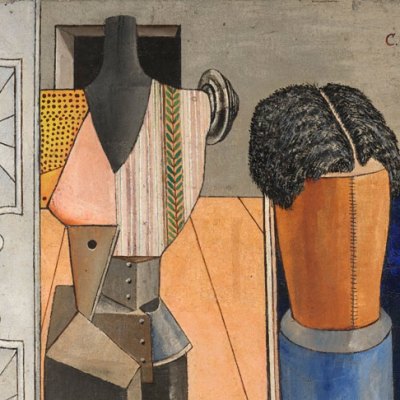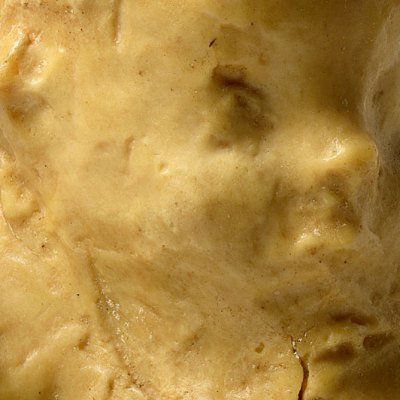One of the most engaging things about Modigliani’s art is his feeling for surfaces. Their effects are subtly involving, whether he used paint thick or thin or worked in stone, but they are often lost in reproduction. Yet this is only one of several reasons why the comprehensive exhibition of his work at Tate Modern brilliantly succeeds in reinvigorating his reputation. Another is the replacement of the mythology around his short life (he died in 1920 at the age of 35) with a more embedded understanding of his involvement with creative networks and the visual culture of the day.
Previously, emphasis on his bohemian lifestyle, and its familiar cocktail of tuberculosis, poverty, womanising, substance abuse and alcohol, has obscured such interesting details as the fact that he was born into a cosmopolitan family of Sephardic Jews; owed much, intellectually, to his maternal grandfather; and toured Italy with his mother, visiting museums, galleries, churches, and ruins. His fascination with non-Western art, aided by his association with two dealers, Paul Alexandre and Paul Guillaume – the second doing more than anyone to promote African art during this period – feeds into the current interest in cross-cultural exchange. But what chimes most with the present moment is the handshake across two generations that links this Modigliani exhibition with ‘Cézanne Portraits’ at the National Portrait Gallery (until 11 February).
Head (1911–12), Amedeo Modigliani. Minneapolis Institute of Art
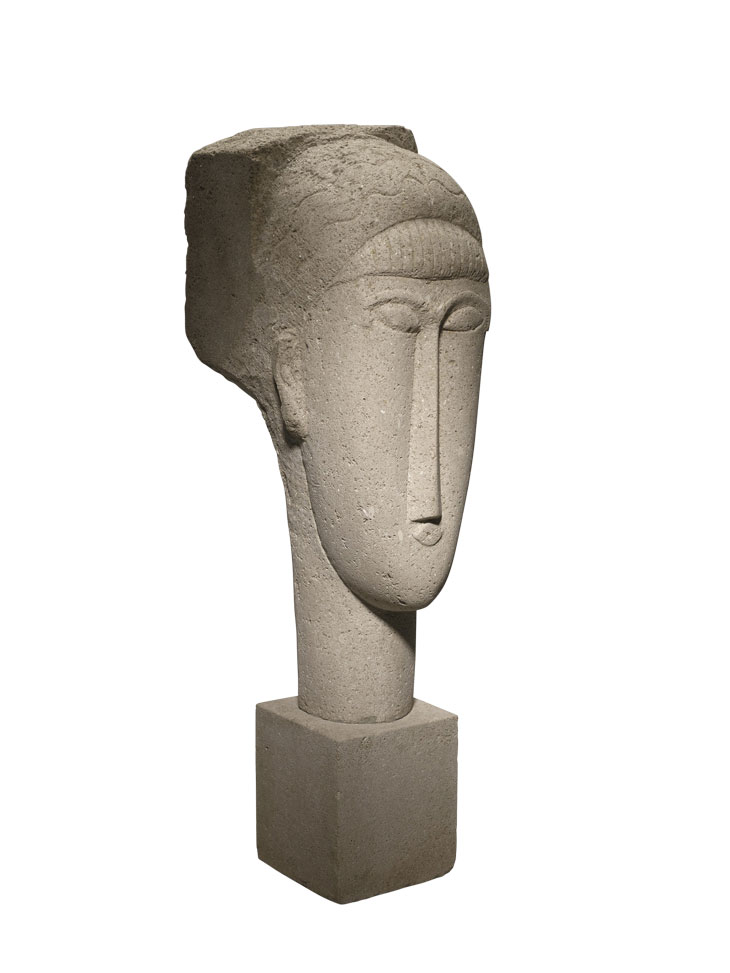
At the Tate Modern exhibition, the first work you encounter is a Cézanne; or so it at first seems. The Cellist (1909) calls to mind Cézanne owing to the dominant warm/cool colour contrast and the relationship between sitter and background that holds the musician in place. In 1906, three years before he painted this portrait, Modigliani had exchanged Italy and his home town of Livorno for Paris, the epicentre of modern art. This was also the year that Cézanne died, and the following year the Salon d’Automne mounted a major retrospective of his work as a memorial to the painter, formerly known as ‘the recluse of Aix’. It was almost certainly this retrospective that caused Modigliani to keep in his jacket pocket an image of Cézanne’s Boy with Red Waistcoat. There are four portraits of this young man who posed in Italian garb, but the one in Modigliani’s reproduction is now in the National Gallery of Art, Washington, D.C. Modigliani one day astonished Paul Alexandre by drawing this picture from memory, in one go, without pause or correction.
Portraiture was to be at the heart of Modigliani’s modernist endeavour. Much has been made of the way in which he created a record of the literary and artistic circles in which he moved, first in Montmartre and then in Montparnasse. Hardly any of these portraits were commissioned, for, like his mentor Cézanne, Modigliani was not concerned with the specifics of social status, character or precise appearance, but with a deeper humanity. He left few statements about his work, but in one he claimed: ‘What I am seeing is not the real and not the unreal, but rather the unconscious, the mystery of the instinctive within the human race.’ Yet each portrait is astonishingly percipient, made vital, in the case of Jean Cocteau, by the lift of an eyebrow, or, in his female nudes, by the jut of a hip or throw of a thigh.
The Little Peasant (c. 1919), Amedeo Modigliani. Tate, London
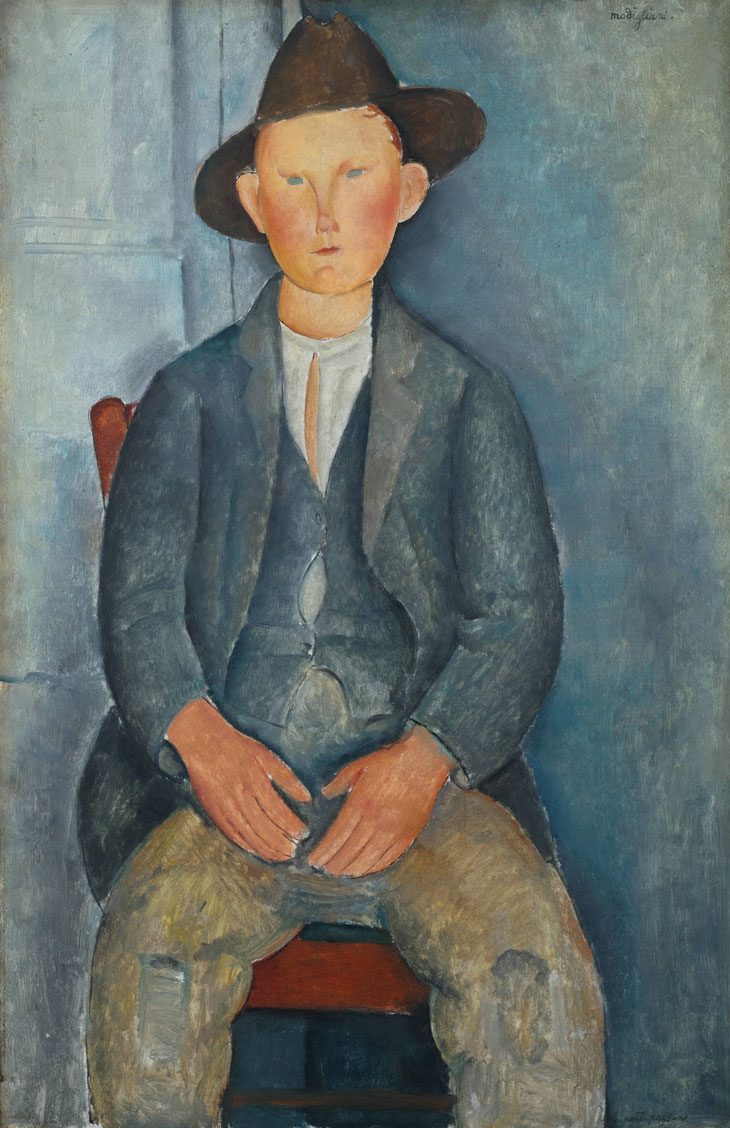
In 1918, at a time when ‘Big Berthas’ had begun to fall on Paris, Modigliani’s third dealer, Léopold Zborowski, who was worried about the artist’s health, arranged for him to move to the Riviera. In the catalogue that accompanies this exhibition, Simonetta Fraquelli argues that by painting ordinary sitters in the South of France – children, servants and anonymous models – Modigliani was able to gain a special empathy with them that introduced a new poignancy and dignity into his portraiture. The much-reproduced The Little Peasant (c. 1918) from the Tate collection, has a limpid simplicity. The minimal definition of the boy’s face suggests Modigliani’s confident handling of weight and movement, with the result that everything seems to depend on the tilt of his hat.
In the course of this exhibition are some unexpected delights. There is a new silent movie, collaging pieces of old film in a recreation of Modigliani’s Paris, offering, among other things, glimpses of the Bateau-Lavoir and the Lapin Agile. There is also the moment when, thanks to a virtual-reality head-set, you find yourself alone in Modigliani’s last studio, with objects all around you, a cigarette still smoking near his easel, and a sheet of paper blown on to the floor. Elsewhere is an entire room devoted to nine of Modigliani’s sculpted heads that grew out of his close friendship with Constantin Brancusi and occupied him for some two years. All are shown lined up in a square-formation, three rows across and three down, allowing comparisons to be made between them in all directions: relatively crude beginnings lead to the sophistication visible in the one in the far corner of the square. This display offers a fascinating insight into the way Modigliani played with influences from Angkorian, African, and Egyptian artefacts. The use of elongation is taken to an extreme while the breadth of the face slims down until, from side-view, face and hair become almost like a flag unfurled.
Jeanne Hébuterne (1919), Amedeo Modigliani. Metropolitan Museum of Art, New York
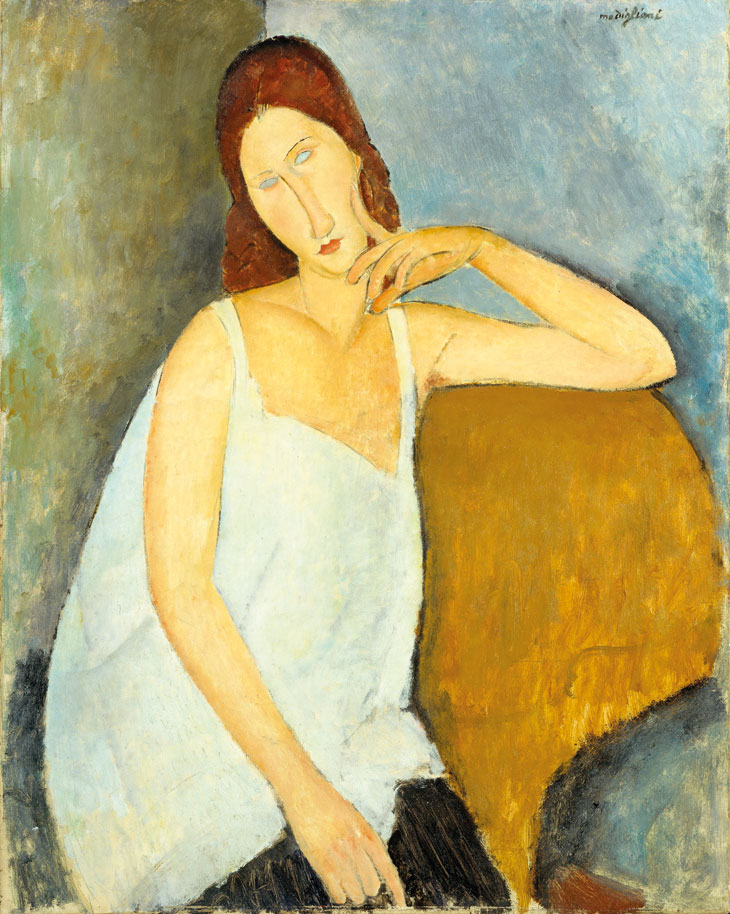
The expressive power of elongation is also found in the long wall of portraits of Jeanne Hébuterne in the final room. She was still a teenager when Modigliani met her and they knew each other for just two and a half years, yet he painted her 20 times, in a range of moods and modes of representation. She was his final mistress, bore him a daughter and was pregnant with his second child when he died of tubercular meningitis. Two days later she took her own life and, with her, that of her unborn child. A note exists in which Modigliani made a vow to marry her when certain papers came through. But this is barely worth a mention in comparison with the fixation that informs the hauntingly feline portraits of her.
‘Modigliani’ is at Tate Modern, London, until 2 April.
From the February issue of Apollo. Preview and subscribe here.

